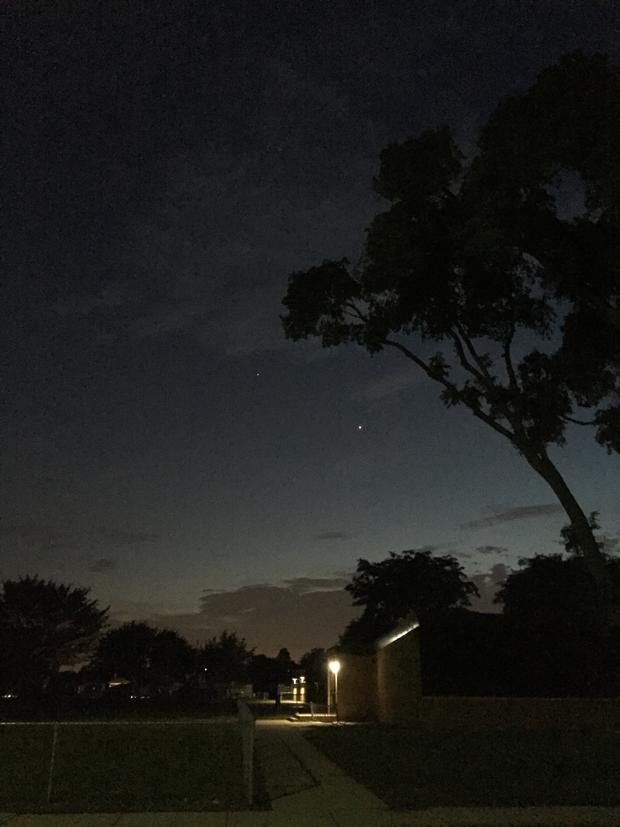Look Up! The Brightest Planets In The June Sky Vie For Your Attention
DETROIT (CBS DETROIT) - There's a story being played out in the near-summer sky. It's a bright, surprisingly clear view of the planets Venus, Jupiter and Saturn to take in and you can do so from your background.
On the brightness scale, Venus ranks top as the brightest planet and trails only the sun and the moon as brightest sky object.
Joe Rao serves as an instructor and guest lecturer at New York's Hayden Planetarium -- he outlined the movement and best viewing options for seeing the two planets this month. Rao gives an calendar outline for viewing:
June 12 and 13: Use binoculars or a wide-field telescope these evenings to enjoy the fine sight of Venus on the north edge of the sparkling Beehive star cluster.
June 14: Mars in conjunction with the sun and is invisible this month. In fact, we'll have to wait until late in August to see Mars again as the Red Planet emerges from the glare of the rising sun as a morning object.
June 19: This evening, take note of the 3 1/2-day old crescent moon hovering well below the planets Venus and Jupiter in the west-northwest sky.
June 20: Take note on how the moon has shifted its position since last evening relative to Venus and Jupiter. The trio now resembles a broad obtuse triangle; the obtuse angle is at Jupiter. The moon appears to Jupiter's lower left while Venus is 7 degrees to Jupiter's lower right.
Jupiter is still prominent in the west in the June twilight; next to Venus it's the second brightest evening "star." Throughout June, Jupiter will be closing in on Venus from the upper left. Telescope users will do best to observe Jupiter early in the month and early in twilight. Even though Jupiter is on the far side of the Sun and about as small as it ever appears, in a telescope it still shows the largest disk of any planet (although by month's end Venus will appear just a trifle smaller). In the first half of June this giant planet is still at least 30 degrees high (three fist-widths at arm's length above horizontal) as seen from mid-northern latitudes 45 minutes after sundown. Look for Regulus, only about a twentieth as bright, to Jupiter's upper left. Jupiter, in Cancer, is trekking slowly eastward against the stars toward Regulus; it reaches the Cancer-Leo border on June 9.
June 24: After passing through inferior conjunction on May 30, Mercury reaches its greatest elongation from the sun in the dawn sky. This is not a very high apparition of Mercury for mid-northern latitudes, but you can try catching it low in the east-northeast about an hour to 45 minutes before sunrise during the second half of this month. Also this morning, Mercury appears 2 degrees above and to the left of the orange star Aldebaran. This pair of 1st-magnitude objects might be spied with binoculars very low near the east-northeast horizon except perhaps from far-northern states, where they might simply be too low to pick out against the brightening dawn.
June 28: Saturn and the moon pair off for a second, closer meeting this month. This evening Saturn will sit a couple of degrees to the moon's lower right.
June 30: Venus and Jupiter make their closest approach to each other this evening, forming a stunning "double planet," Jupiter appearing above Venus and separated by just over 0.3 degrees. Jupiter shines at magnitude -1.8 and yet as brilliant as it is, it's still only 1/11th as bright as Venus.
Happy night viewing.
Get any great pix from the June show in the sky? Share with us on FB and Twitter.




